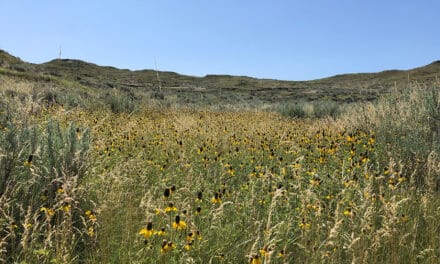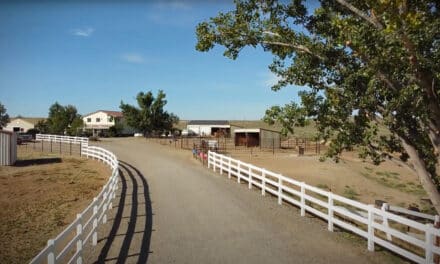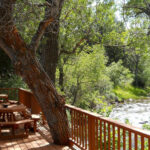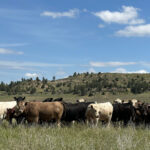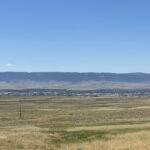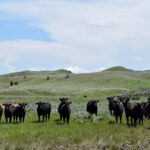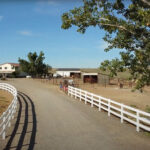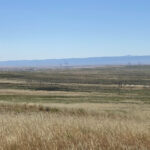BB Brooks Ranch · Natrona County, Wyoming
The BB Brooks Ranch situated in Natrona County, near the city of Casper, has the distinction of being owned by Bryant Butler Brooks, the seventh governor of Wyoming from 1905 to 1911. Brooks was not only a prominent politician but also a successful businessman and rancher whose impact on Wyoming extends beyond his political career. As a rancher, he contributed to the growth of the state’s cattle industry, which has been a significant part of Wyoming’s economy. The ranch itself is a testament to the early days of Wyoming’s statehood and the development of its agricultural industry. Brooks’ tenure as governor and his involvement in the development of Wyoming’s agricultural and political landscape impart a historical significance to this ranch, now offered as land for development and private estates.
Brooks Ranch Offered as Four Parcels
- Casper Westwinds East Ranch zoned RR-2 — 3,300± deeded acres; 480± leased acres
- Casper I-25 Frontage Ormsby zoned UA — 1,422± deeded acres
- Casper I-25 Frontage Westwinds zoned Commercial — 653± deeded acres
- Casper Antelope Hills Residential zoned RAM — 312± deeded acres
Casper Area Quick Facts
- Casper-Natrona County has the only international Airport in Wyoming.
- The North Platte River running through Casper is one of the most iconic fly fishing destinations in the world.
- Casper has a diverse economy with industries including energy, healthcare and tourism offering several thriving markets for development opportunities.
- Casper’s location at the heart of Wyoming with Interstate 25 running through it makes it a strategic hub for business and investment.
- The City of Casper continues to invest in development projects strengthening the infrastructure each year.
- Wyoming is known for its business-friendly policies for everyone from ranchers to business seekers with no income tax and low corporate taxes.
- 13 Miles from Casper International Airport
- 4 hours from Denver by Interstate 25
Brooks Ranch Development Opportunity
The BB Brooks Ranch location places it in the central region of Wyoming, known for its historical significance in the state’s development. Casper offers a unique blend of outdoor adventure and urban amenities appealing to those seeking a certain kind of lifestyle.
- Open Spaces: Casper sits near stunning natural landscapes like the Casper Mountain Range and the North Platte River. This proximity allows for easy access to activities like hiking, biking, fishing, hunting, camping, and rock climbing.
- Affordable Adventure: Compared to some other mountain towns, Casper offers a lower cost of living, making it an attractive option for those who want to enjoy an active lifestyle without “breaking the bank”.
- Growing Economy: Casper’s economy is expanding beyond its traditional reliance on oil and gas. New industries are emerging, creating more job opportunities.
- Big-City Amenities with Mid-Size Convenience: Casper offers many of the amenities found in larger cities, like hospitals, universities, and cultural attractions, but with a small-town feel. This translates to less traffic congestion and a stronger sense of community.
- Affordable Housing: Housing costs in Casper are generally lower than the national average, making it an attractive option for homebuyers and developers.
- Growing Community: Casper’s population is on the rise, which could create a demand for new housing, commercial spaces, or agricultural endeavors.
Natrona County Zoning
Agricultural (AG)
- Purpose: Supports general agricultural activities and balances agricultural use with some residential development. AG supports traditional farming and some residential use.
- Uses: Permits traditional farming, livestock raising, and ancillary agricultural structures.
- Development Standards: More regulated than RAM but less restrictive than UA, focusing on maintaining agricultural productivity while allowing some residential development.
Rural Agricultural Mining (RAM)
- Purpose: Designed for extensive large-scale agricultural, ranching, and mining activities with fewer restrictions than other agricultural zoning.
- Uses: Permits ranching, farming, livestock raising, and various forms of mining.
- Development Standards: Fewer restrictions on land use, focusing on preserving the rural character and allowing extensive land-based activities.
Urban Agricultural (UA)
- Purpose: Integrates agricultural activities into urban settings or areas immediately adjacent to a city or urban area with strict urban compatibility regulations.
- Uses: UA focuses on small-scale urban agriculture. Supports community gardens, urban farms, small-scale animal husbandry, and educational agricultural programs.
- Development Standards: Stricter regulations to ensure compatibility with urban living, including noise, odor control, and use of chemicals.
Rural Residential (RR)
The Rural Residential (RR) zoning designation is intended for low-density residential development in rural areas, offering a balance between rural living and residential amenities.
-
Permitted Uses
- Single-family homes
- Small-scale agriculture
- Limited livestock raising
- Home-based businesses
-
Development Standards
- Larger lot sizes compared to urban residential zones
- Specific setback requirements to maintain rural character
- Restrictions on the number of dwelling units per acre
Commercial
In Natrona County there are different types of commercial zoning that cater to various business and development needs. The primary commercial zoning categories in the county include the following, all of which may not apply to the BB Brooks Ranch development.
Neighborhood Commercial (C-1)
This zoning is intended for small-scale commercial establishments that serve the local neighborhood. Examples include convenience stores, small restaurants, and other businesses that do not generate a large amount of traffic or require extensive parking facilities.
General Commercial (C-2)
This zoning allows for a broader range of commercial activities, including retail stores, service businesses, and offices. C-2 zones are typically located along major roads and highways to accommodate higher traffic volumes and provide greater visibility for businesses.
Central Business District (C-3)
This zoning is designated for the central business areas of towns or cities. It supports a mix of high-density commercial uses, such as office buildings, hotels, and larger retail stores. The focus is on creating a vibrant, pedestrian-friendly environment.
Light Industrial (LI)
While primarily industrial, this zoning allows for certain commercial uses that are compatible with light manufacturing and warehousing operations. Businesses in this zone might include equipment sales, repair services, and wholesale trade.
These zoning categories ensure that commercial activities are appropriately located to minimize conflicts with residential areas and other land uses, promoting orderly development and economic growth in Natrona County. For more specific details and the latest zoning regulations, it is best to consult the Natrona County Planning Department.
Conclusion
Detailed historical insights into the legacy of Bryant Butler Brooks and the history of the ranch is available from historical societies in Natrona County such as the Natrona County Historical Society. The Wyoming State Archives and the Wyoming State Historical Society should also have comprehensive records and documents related to BB Brooks’ life and contributions to the state.


